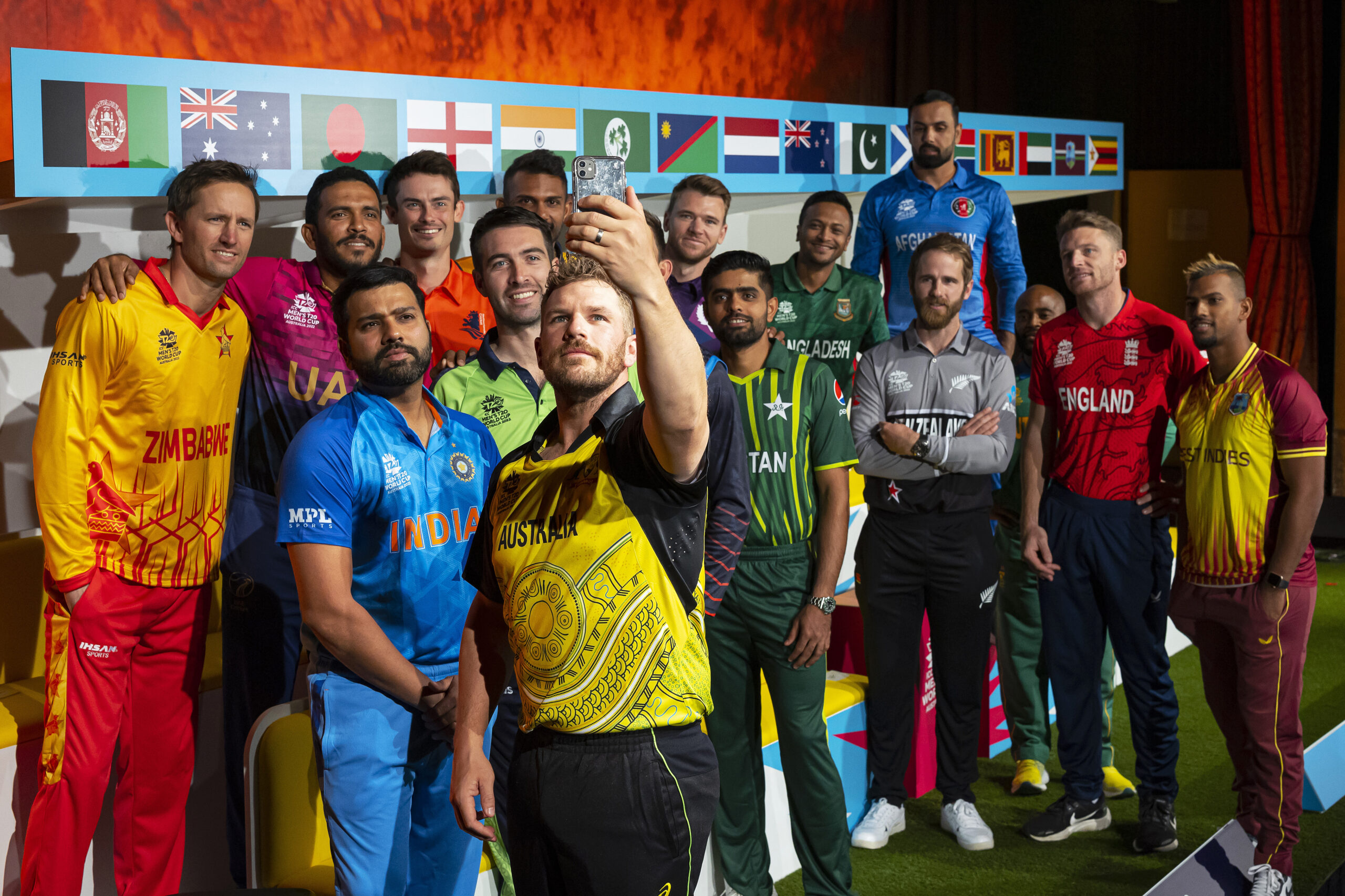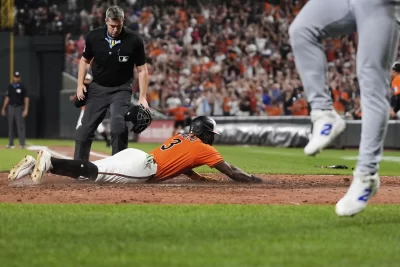
MELBOURNE, AUSTRALIA - OCTOBER 15: Team captains pose for a selfie ahead of the ICC Men's T20 World Cup on October 15, 2022 in Melbourne, Australia. (Photo by Daniel Pockett- ICC/ICC via Getty Images)
The muggy April night was dark, but Wankhede Stadium shone bright with lights beaming down from its giant towers. Forty-two thousand spectators had just been silenced as Virat Kohli drilled a return catch to Tillakaratne Dilshan, leaving India at 121 for 3. A target of 275 seemed far away. And down the pavilion steps came MS Dhoni.
A collective buzz went around; the captain was not in form, but was still promoting himself above Yuvraj Singh who was. But Dhoni was not being impulsive or merely bold and innovative. He knew he had to tackle and neutralize Muralitharan before Yuvraj came to bat. Paddy Upton, the mental-conditioning expert with the Indian team, whispered to Kirsten, ‘Dhoni will win the game for us.’ In his book, The Barefoot Coach, Upton explains Dhoni to us, ‘It is not emotional control but the lack of access to emotions… a performance enhancing gift from birth.’ MSD began slowly, 2 off 10 balls, 13 off 24.
And then he thumped Murali to cover off his back foot for a boundary. The rest is history. As Dhoni hit Kulasekara into the stands at long on, the crowd went berserk. The captain merely twirled his bat and picked his souvenir stump. Later as his teammates, danced, jumped and wept, Dhoni was by comparison, sphinx-like. Courage, brilliance, nerves of steel, but most important, a tranquil mind that realized long ago that triumph and disaster are mere imposters.
Perhaps the template for heroics by World Cup captains was set at the first-ever World Cup final in 1975. With West Indies tottering at 50 for 3, out came bespectacled Lloyd, in his characteristic stooping gait, with a bat that looked like a match stick in his hand. What followed was carnage as Lloyd tore into the Aussies. While white-haired, 40-year-old Kanhai, unrecognizable from the pomp of his youth, gave him sedate company, Lloyd pummeled 12 fours, 2 sixes and hit a century of 85 balls.
The bowlers he belted were Lillee, Thomson, Gilmour and Walker. Remember, there were no field restrictions in those days. Chasing 292, Australia panicked their way to four run outs and a defeat that was bigger than the 17-run margin. West Indies in 1975 had not become the unstoppable juggernaut; they were just starting to rebuild after the Sobers era. Richards and Greenidge were new, as was Roberts. Holding, Marshall and Garner had not arrived. Lloyd made all this irrelevant that June evening. Face almost inscrutable, Clive Lloyd lifted the first ever cricket World Cup trophy.
The most vivid Indian cricket photograph is of course that of Kapil Dev lifting the Prudential Cup in June 1983. The team went as no-hopers, the odds deservedly 66 to 1 on India. Srikkanth, the irrepressible story-teller, says he asked his wife to join him on the World Cup tour so that they could ‘watch the final’ and proceed to USA on holiday. Kapil torpedoed all that.
Every cricketer in that 1983 team will swear that Kapil’s 175 not out to pull India from 17 for 5 against Zimbabwe, is the greatest one-day innings by an Indian. Defending just 183 in the final, it was Kapil’s catch – running miles backwards to finish Richards – that opened the floodgates. Kapil’s tactical nous was also fully tuned on through the tournament. The much higher use of Mohinder Amarnath in conditions that favored his gentle swing; preferring Kirti Azad to Shastri at the latter end of the tournament; and harnessing Balwinder, Binny and Madan Lal with himself for a canny bowling combination.
But perhaps the first seeds were sown a few months earlier in Berbice, Guyana when India beat West Indies in the second ODI of their bilateral series. It was further reinforced in the first game of the 1983 World Cup, when they beat the Windies on the back of Yashpal Sharma’s heroics. People forget that India beat the mighty Windies thrice in four months. Kapil, the inspirational captain, his 1,000-Watt toothy grin has never been matched by any winning captain.
Australia went through their lowest period in the mid-eighties. Chappell, Marsh, Lillee, Thomson, they had all gone. Hughes had thrown in the towel, finding the burden of leading unbearable and Allan Border inherited a down-in-the-dumps team. But it was the perfect job for the most obdurate left-hander in cricket history. No one else could have snarled and berated, coaxed and shown teammates by personal example, what the baggy green cap meant.
With Bob Simpson as coach, Border formed a partnership that reshaped Australian cricket history. The first step in the turnaround was that tied Test match in Chennai, exactly a year before WC 1987. A tie that felt like a loss to Indian cricketers and like a win for the Aussies. It was the game that lit their flame again. So connect this to their triumph in the lengthening shadows at Eden Gardens in November 1987. With England cruising at 135 for 2, just 119 to get, Border brought himself on.
Branded forever in public memory is the visual of Gatting caught reverse-sweeping the part-time left-arm spinner. Border gambled and won. Finals usually claim all the attention but people also remember that Border won tough matches on the way, never afraid to throw his young teammates into the most challenging situations. Be it the one run win over India in their first game or the semifinal against Imran Khan’s Pakistan at their citadel in Lahore.
The World Cup seems to bring out the best from the captains. Not only do they raise their game but their strategic and tactical acumen acquires an inspirational edge, often giving them match-winning breakthroughs.






